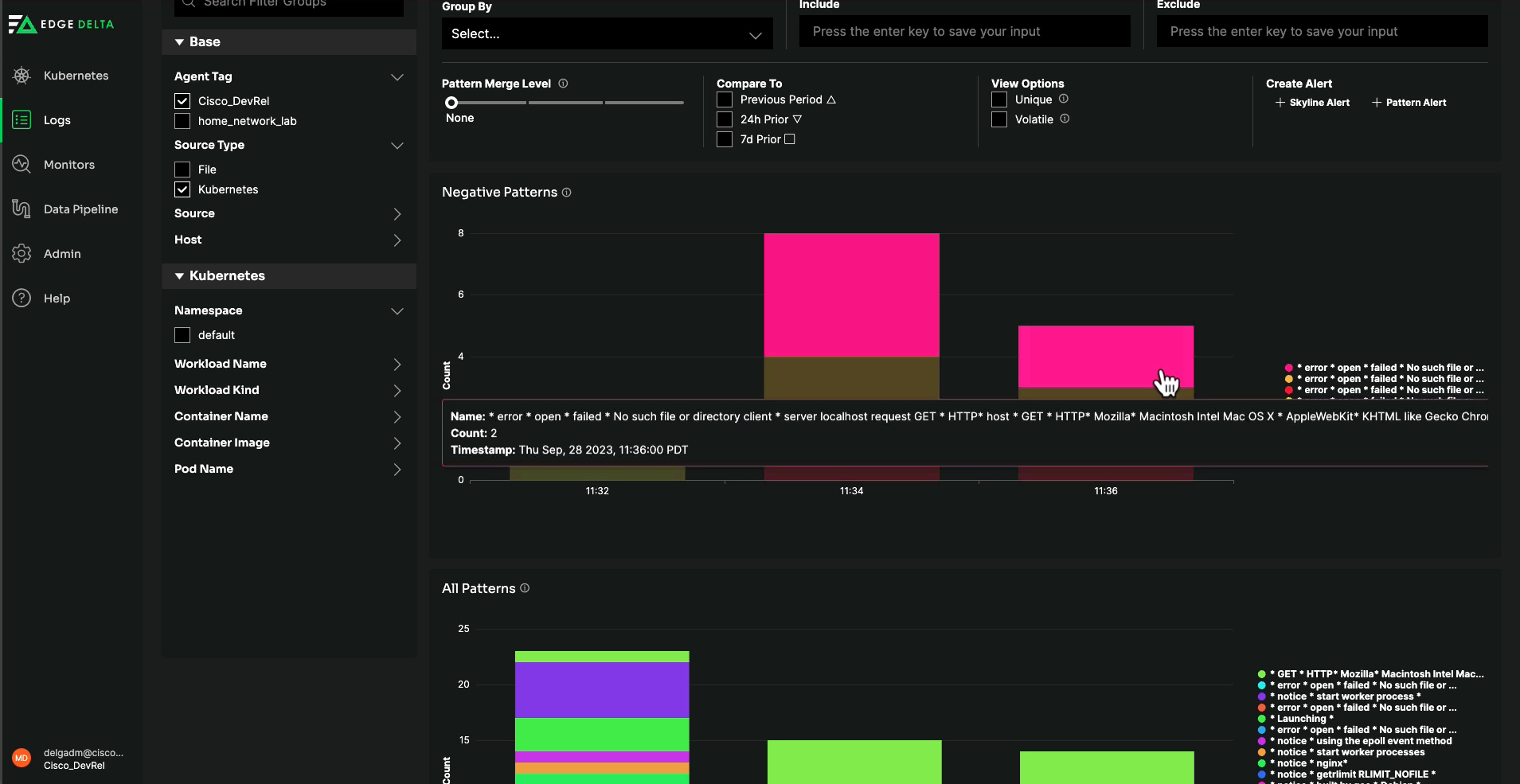
[ad_1]
Extra information doesn’t imply higher observability
If you happen to’re aware of observability, you already know most groups have a “information drawback.” That’s, observability information has exploded as groups have modernized their utility stacks and embraced microservices architectures.
If you happen to had limitless storage, it’d be possible to ingest all of your metrics, occasions, logs, and traces (MELT information) in a centralized observability platform . Nevertheless, that’s merely not the case. As a substitute, groups index giant volumes of information – some parts being recurrently used and others not. Then, groups must determine whether or not datasets are value retaining or ought to be discarded altogether.
For the previous few months I’ve been enjoying with a software known as Edge Delta to see the way it would possibly assist IT and DevOps groups to unravel this drawback by offering a brand new option to accumulate, remodel, and route your information earlier than it’s listed in a downstream platform, like AppDynamics or Cisco Full-Stack Observability.
What’s Edge Delta?
You should utilize Edge Delta to create observability pipelines or analyze your information from their backend. Sometimes, observability begins by delivery all of your uncooked information to central service earlier than you start evaluation. In essence, Edge Delta helps you flip this mannequin on its head. Stated one other means, Edge Delta analyzes your information because it’s created on the supply. From there, you possibly can create observability pipelines that route processed information and light-weight analytics to your observability platform.
Why would possibly this strategy be advantageous? Right now, groups don’t have a ton of readability into their information earlier than it’s ingested in an observability platform. Nor have they got management over how that information is handled or flexibility over the place the info lives.
By pushing information processing upstream, Edge Delta permits a brand new form of structure the place groups can have…
- Transparency into their information: “How precious is that this dataset, and the way can we use it?”
- Controls to drive usability: “What’s the best form of that information?”
- Flexibility to route processed information anyplace: “Do we’d like this information in our observability platform for real-time evaluation, or archive storage for compliance?”
The online profit right here is that you just’re allocating your assets in the direction of the precise information in its optimum form and placement primarily based in your use case.
How I used Edge Delta
Over the previous few weeks, I’ve explored a pair totally different use circumstances with Edge Delta.
Analyzing NGINX log information from the Edge Delta interface
First, I needed to make use of the Edge Delta console to research my log information. To take action, deployed the Edge Delta agent on a Kubernetes cluster working NGINX. From right here, I despatched each legitimate and invalid http requests to generate log information and noticed the output through Edge Delta’s pre-built dashboards.
Among the many most helpful screens was “Patterns.” This function clusters collectively repetitive loglines, so I can simply interpret every distinctive log message, perceive how steadily it happens, and whether or not I ought to examine it additional.
 Edge Delta’s Patterns function makes it straightforward to interpret information by clustering
Edge Delta’s Patterns function makes it straightforward to interpret information by clustering
collectively repetitive log messages and supplies analytics round every occasion.
Creating pipelines with Syslog information
Second, I needed to control information in flight utilizing Edge Delta observability pipelines. Right here, I put in the Edge Delta agent on my Mac OS. Then I exported Syslog information from my Cisco ISR1100 to my Mac.
From throughout the Edge Delta interface, I configured the agent to hear on the suitable TCP and UDP ports. Now, I can apply processor nodes to remodel (and in any other case manipulate) my information earlier than it hits my downstream analytics platform.
Particularly, I utilized the next processors:
- Masks node to obfuscate delicate information. Right here, I changed social safety numbers in my log information with the string ‘REDACTED’.
- Regex filter node which passes alongside or discards information primarily based on the regex sample. For this instance, I needed to exclude DEBUG degree logs from downstream storage.
- Log to metric node for extracting metrics from my log information. The metrics will be ingested downstream in lieu of uncooked information to help real-time monitoring use circumstances. I captured metrics to trace the speed of errors, exceptions, and destructive sentiment logs.
- Log to sample node which I alluded to within the part above. This creates “patterns” from my information by grouping collectively comparable loglines for simpler interpretation and fewer noise.
 Via Edge Delta’s Pipelines interface, you possibly can apply processors
Via Edge Delta’s Pipelines interface, you possibly can apply processors
to your information and route it to totally different locations.
For now all of that is being routed to the Edge Delta backend. Nevertheless, Edge Delta is vendor-agnostic and I can route processed information to totally different locations – like AppDynamics or Cisco Full-Stack Observability – in a matter of clicks.
Conclusion
If you happen to’re fascinated about studying extra about Edge Delta, you possibly can go to their web site (edgedelta.com). From right here, you possibly can deploy your personal agent and ingest as much as 10GB per day free of charge. Additionally, take a look at our video on the YouTube DevNet channel to see the steps above in motion. Be at liberty to publish your questions on my configuration beneath.
Associated assets
Share:
[ad_2]